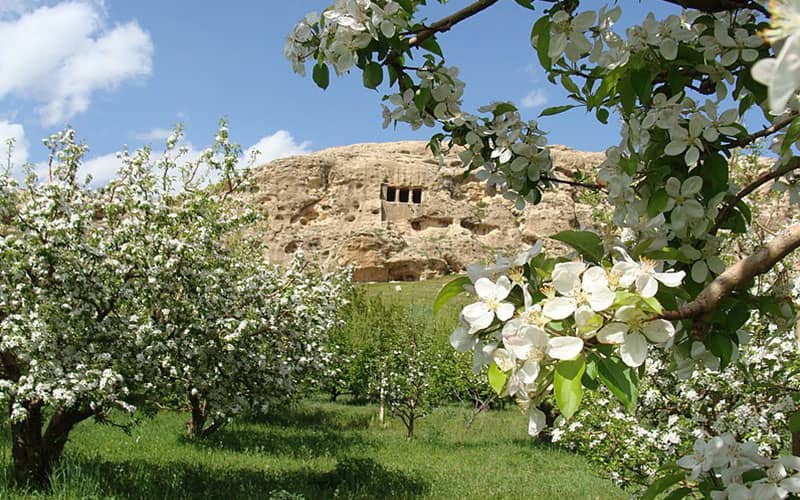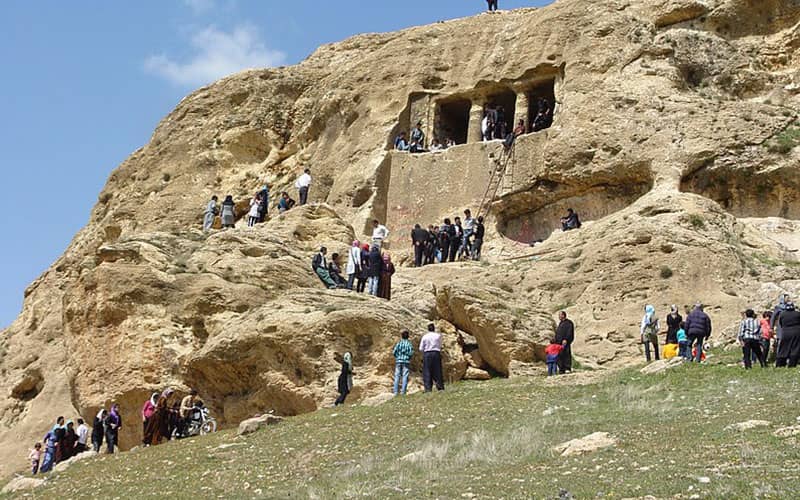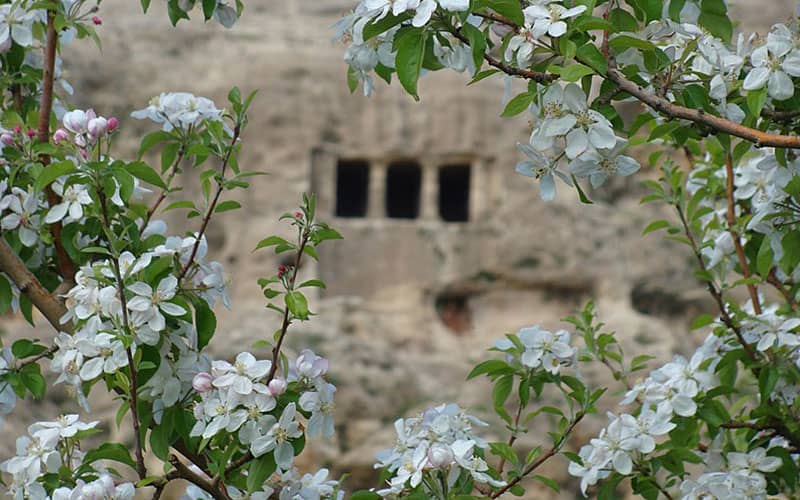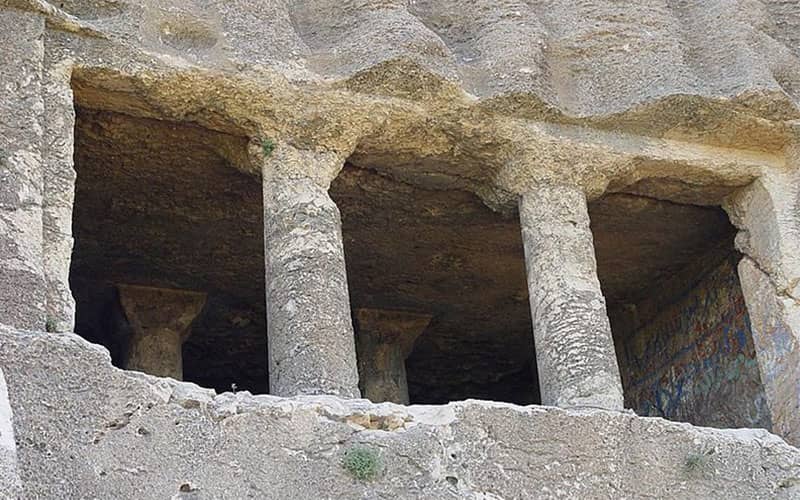Faqraqa Stone Cemetery is a historical monument of the Medes Empire, located 15 kilometers north of Mahabad on the Mahabad-Miandwaw (Miandoab) road, near the village of Agriqash. Some archaeologists believe this cemetery dates back to the reign of Farawartish (Fratis), father of Diako (the first Median emperor), south of Lake Urmia, which dates back to 700 BC.

Carved into a mountain with four pillars carved into the rock, the cemetery has two floors and three graves, the left one being larger than the others. Some archaeologists believe the large tomb belongs to Diako's father, Farawartish, and the other two tombs belong to two Medes military commanders. Also, considering that the cemetery is located near the village of Agriqash, which means eternal fire, it is likely that this place was one of the sacred fireplaces of that time.

The Medes believed that God first appeared to humans in the form of a face inside a mountain, blessed mankind, provided flowing rivers, agriculture, and livestock, and then returned to the mountain. That is why the Medes buried their kings inside the mountains so that they could return to God. The Medes' tombs were always built so that the sun would shine on them at noon and afternoon and the light and heat of the gods would flow over them. They were also built facing a local river or stream. These two characteristics are observed in all the tombs left behind during the Medes period.

Archaeologists say Faqraqa is the northernmost Medes cemetery. The other cemeteries of the Medes period are all located south of Faqraqa and differ somewhat from Faqraqa. The main difference is that they have a courtyard, while Faqraqa does not have a courtyard. It is dug into the mountain without a courtyard and its four pillars have protected the building from collapse for more than 2700 years.

The famous Greek historian Herodotus says that Farawartish was the second king of Medes and was buried in Faqraqa. French historian and archaeologist Roman Gershman believes that the cemetery is dedicated to the tomb of a Mannai prince named Farwartish. Ernst Emil Herzfeld, a famous German historian, believes that the tomb of Faqraqa belongs to the Medes period and contains the tomb of one of the princes of the civilization of Manna and dates back to 840 to 660 BC.

The Faqraqa tomb is 1331 meters above sea level and the bottom of the tomb is five meters higher than the bottom of the stone from which it is carved. Two of the four pillars are inside the tomb and the other two are outside, with the two outer pillars thicker than the inner ones. The style of the pillars is the same as that used in the temple of Anahita in Kermashan and resembles Greek architecture. The pillars are 220 cm high from bottom to top, have a square base, and both end with a square shape.








